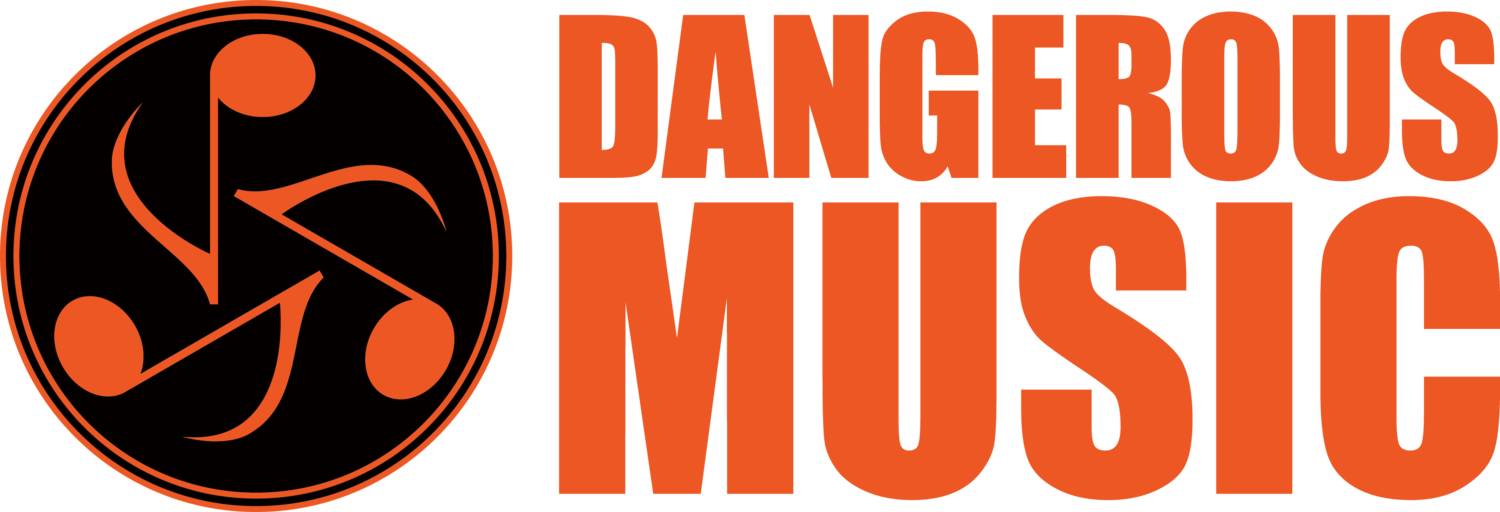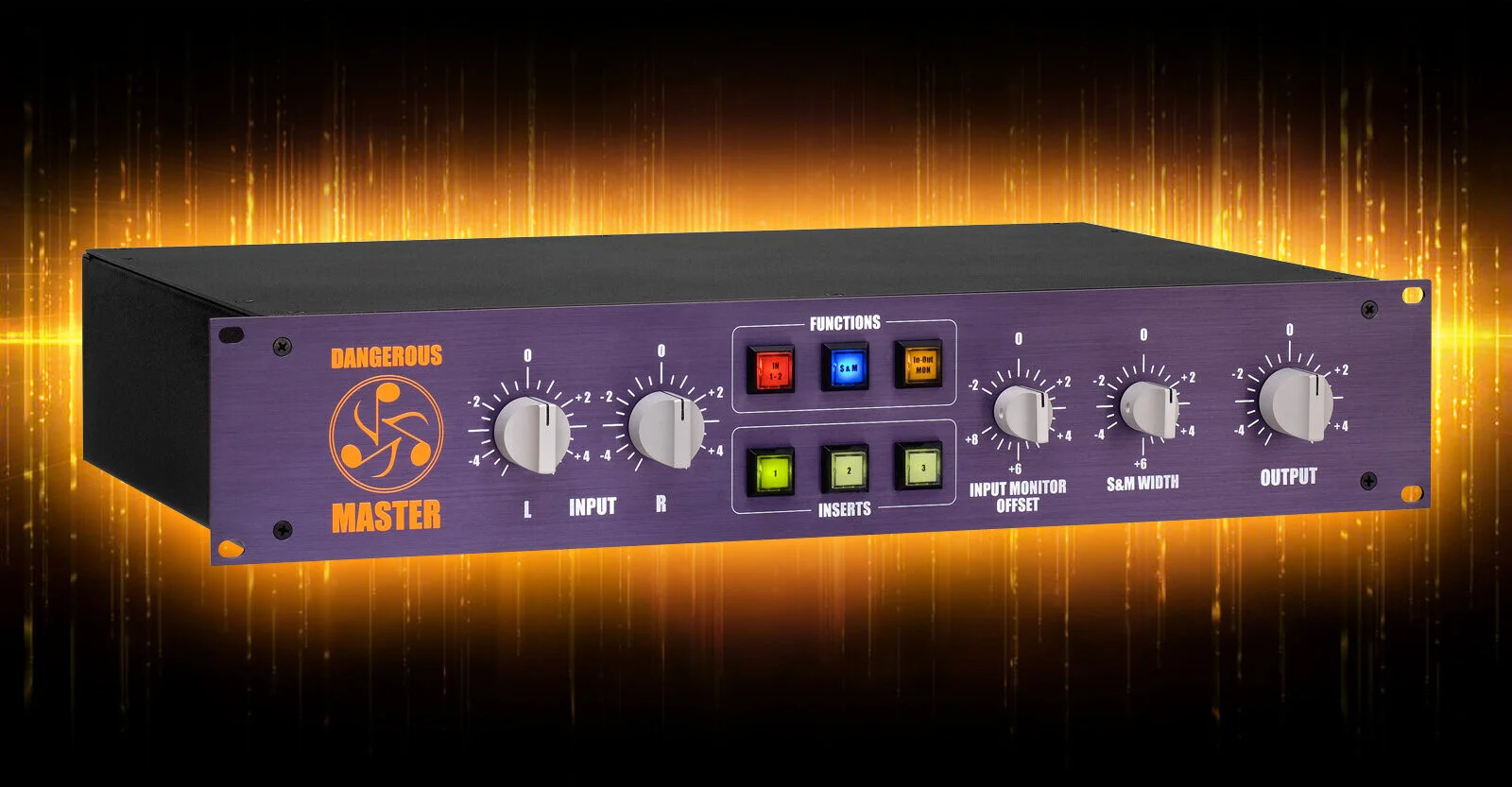KEYBOARD MAG REVIEW: DANGEROUS MUSIC D-BOX
You’ll need eight free analog outputs on your audio interface, which you connect via snake to the D-Box’s summing input — this uses a multi-pin DB25 connector for space reasons. It’s a nice touch that all other connections except headphone outs are on XLR jacks. While the D-Box treats summing channels 1-6 as three stereo pairs, you can pan channels 7 and 8 separately, or dial ’em hard left and right for use as a fourth stereo pair.
To mix a song down, you’d create three stereo output strips and two mono ones in your DAW’s mixer window, assigning them to consecutive D-Box inputs. Your stereo pairs could be stems of, say, vocals, drums, and keys-plus-guitars. You could then pick two things to put “up the middle” in mono or pan as you please on channels 7 and 8. The D-Box’s stereo sum output would go to a free input pair on your audio interface, from which you’d record to a new stereo track as your mix plays back. Better still, you could record into a second computer or dedicated mixdown deck — my D-Box feeds my Korg MR-1000 stereo recorder (reviewed July ’07).
Big studios bring every DAW output back through a six-figure console (think Neve or SSL) for mixdown, and while having just eight channels to work with isn’t nearly as luxurious, the D-Box’s sonic results are way closer to the big-desk league than they are to the usual home studio alternatives. Recording your “in the box” DAW mix in real time from a stereo output on your audio interface is better than bouncing to disk. Recording from eight outputs through the D-Box was, to my ears, better still. It preserved noticeably more depth, detail, and sense of instrument location. For summing, I’d also rather have eight channels of D-Box than 16 (or more) channels of typical compact mixer — the circuitry in the D-Box that merges those eight channels into two is truly audiophile-grade.
Monitor control is straightforward. In addition to the summing output, two more stereo outs drive two pairs of powered speakers (or power amps and passive speakers). Two digital inputs, marked DAW and CD, conveniently auto-detect whether the incoming signal is AES/EBU or S/PDIF format, and lock to any sample rate up to 96kHz. (Actually, the spec is 30-100kHz.) By default, you listen to one source at a time, but you can set the D-Box to let you hear up to three at once: both the eight-channel sum and extra stereo analog input (ideal for a keyboard mixer), plus either of the digital inputs. With all inputs in use, rapid switching was silent and glitch-free, and the D-Box took just a split second to adjust between digital signals with different sample rates. The headphone outs are clean, detailed, and capable of ear-frying volume.
There are pricier solutions with more channels and features, many coming in the form of separate summing and monitoring boxes such as the Dangerous 2-Bus and Monitor ST, respectively. Less expensive ways of achieving similar goals include getting a Big Knob for monitoring and devoting a compact mixer entirely to summing. But for keyboard-based producers who mix their own music and demand absolute audio quality, the D-Box is the Goldilocks solution. “I wonder how I ever lived without it” may not sound like the words of a gear-weary magazine critic, but that’s exactly how this critic feels. Key Buy!



